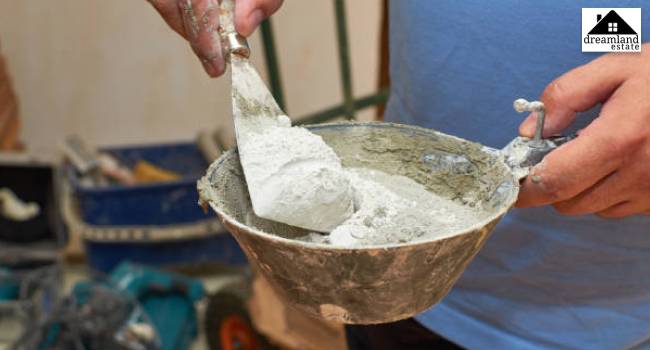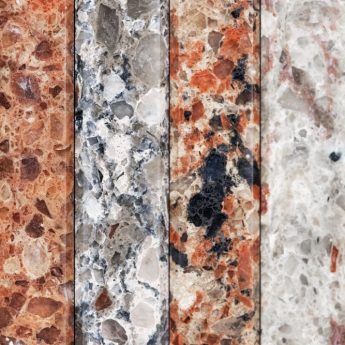What Is Blast Furnace Slag Cement? Is It Good To Use?

What Is Blast Furnace Slag Cement?
According to FHWA, “In the production of iron, iron ore, iron scrap, and fluxes (limestone and/or dolomite) are charged into a blast furnace along with coke for fuel. The coke is combusted to produce carbon monoxide, which reduces the iron ore to a molten iron product. This molten iron product can be cast into iron products, but is most often used as a feedstock for steel production. Blast furnace slag is a nonmetallic coproduct produced in the process.”
Generally, a blast furnace slag consists of different types of minerals like silicates, aluminosilicates, and calcium-alumina-silicates. Furthermore, the molten slag in the process absorbs most of the sulfur from the charge. This slag consists of 20% of all the iron produced in the process. When this slag is used to create cement, it is called a blast furnace slag cement.
Basically, manufacturers convert the blast furnace slag into granules and mix ordinary Portland cement with it. The resultant is the blast furnace slag cement.
Manufacturing And Ingredients:
- Calcium Oxide (38 to 50%)
- Silicon Dioxide (27 to 39%)
- Aluminum Oxide (8 to 20%), and
- Magnesium Oxide (Less than 10%)
- Ordinary construction – 20 to 40%
- Construction for a reduction in the hydration of heat – 50 to 80%
- Structures under chloride attack – 50 to 81%
- Structures under sulfate attack – 50 to 82%
- Marine construction – 60 to 80%
Blast-Furnace Slag Cement: Properties
- The density of slag cement is 3.04 g/cm³.
- Slag cement has a surface area of 4050 cm²
- While the setting time is 60 minutes initially, the final setting time of this cement is 600 minutes.
- The compression strength of Blast furnace slag cement is 23.5 N/mm2 for three days, 36.1 N/mm2 for seven days, and 62.4 N/mm2 for 28 days.
- Lastly, the chemical composition of slag cement comprises 2.88% magnesium oxide, 2.19% sulfur trioxide, and 1.47% of ignition loss.
Uses Of Blast Furnace Slag Cement:
- Slag cement is extensively utilized in ready-to-mix compositions for concrete plants.
- Slag cement is also used extensively in the construction of structures previously under chloride or sulfate attacks. For example, structures like marine structures, bored piles, or sub-structures all require slag cement.
- Blast Furnace Slag Cement has properties for retaining water. So naturally, as a result, it can be used quite effectively for water-retaining structures like ports, rivers, tunnels, and any structure that needs improvement in the impermeability.
- Blast Furnace Slag Cement is also for the construction of mass concrete structures that need a low rate of hydration, such as embankments and similar foundational structures.
Is Blast Furnace Slag Cement Good To Use?
Advantages Of Using Blast Furnace Slag Cement:
- The strength obtained by slag cement initially is low compared to ordinary cement. However, the final strength obtained by the same is either equal to or higher than ordinary cement.
- Since slag cement is crushed into finely granulated pieces, it can fill up pores more efficiently compared to ordinary cement. As a result, slag cement has a low bleeding level and a high level of workability.
- Slag cement can resist attacks from both chlorides and sulfates and, at the same time, is an ideal option in case of any risk associated with alkali-silica reactions.
- Slag cement undergoes a hydration process that is pretty slow, which is responsible for its setting time to be high initially along with a high slump retention level.
- Slag cement comes in such a finely grounded form that it reduces the level of permeability while increasing its durability.
- Since slag cement experiences low levels of heat hydration because it’s an exothermic process, it is extensively used for structures where thermal cracking can be predicted.
- Since the Blast Furnace Slag Cement is white in color, the color of the acquired cement is always whiter than that of ordinary cement.
- Compared to the cost of production in the case of Ordinary Portland Cement (OPC), slag cement has a pretty low cost of production.
Disadvantages Of Using Blast Furnace Slag Cement:
- Since the initial strength obtained by slag cement is low compared to ordinary cement, the product can never be used in the construction processes involving reinforced cement concrete (RCC).
- Slag cement has a setting time of 60 minutes initially which is considered higher than ordinary cement. As a result, the product can never be used in construction processes involving any repair or emergency.
Importance of Blast Furnace Slag Cement

Despite being centuries old, the use of slag cement is still intact in modern constructions. You already know that the blast furnace slag cement is a byproduct of steel-making. Since it has a good amount of iron content, it enhances the durability and benefits of traditional concrete. Apart from that, it also helps to reduce waste, usage of energy, and greenhouse gas production.
You can virtually use slag cement in any construction process. Here, you can implement it either by mixing it with simple Portland cement, part with blended cement, or separately adding it. Basically, in concrete mixes, blast furnace slag cement replaces part of the Portland cement.
The Slag Cement Association, which is an industry trade group, recommends using blast furnace slag cement as a supplement to concrete. According to them, this will offer high strength, improved resistance against chemicals, and reduced permeability.
Furthermore, if you use it as a recycled material, it will require a lot less energy and natural resources. This is a lot less as compared to conventional types of cement.
You will find slag cement in almost all types of concrete constructions – dams, pavements, structures, foundations, retaining walls, and more.
What Are the Major Environmental Benefits of Blast Furnace Slag Cement?

There are a lot of environmental benefits to blast furnace slag cement, which makes it a better option for sustainable construction.
One of the major aspects that makes it a sustainable option is that it is a recycled product. It is formed out of blast furnace slag, which is meant for disposal. Hence, the energy, emissions, and raw materials that one requires to produce slag cement are much less as compared to traditional portland cement.
For example, if you replace 30% to 50% of the portion of Portland cement with slag cement, you will be able to significantly lower its environmental impact. As compared to Portland cement, this blast furnace slag cement requires 90% less energy.
Furthermore, by using slag cement instead of Portland cement, you will be able to significantly reduce greenhouse gas emissions.
Frequently Asked Questions (FAQs):
The following are the most common questions that you will find on blast furnace slag cement:
1. What Are Slag Cement Disadvantages?
2. What Is The Benefit Of Slag Cement?
When you use slag cement, you choose several crucial benefits like high workability and durability, amongst other options.
3. Is Slag Good For Concrete?
Yes, slag is good for concrete because of several factors. The most important reason, however, is a reduction in energy and emission of greenhouse gasses.
Conclusion:
Now that you know the many different uses, benefits, and even disadvantages of Blast Furnace Slag Cement, it will be easier to make the choice of whether or not to use it for any impending construction. An overview of how slag cement is obtained accompanied by a thorough discussion of its properties will only enable you to make the correct choice!
Read Also:
- Construction Costs: The Money Behind The Buildings
- 5 Effective Strategies to Improve Construction Site Security
- What Is Residential Construction? Understanding the Process











Leave A Reply